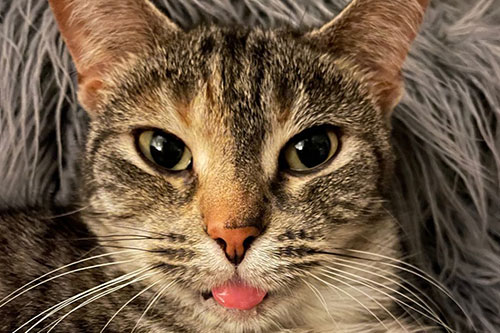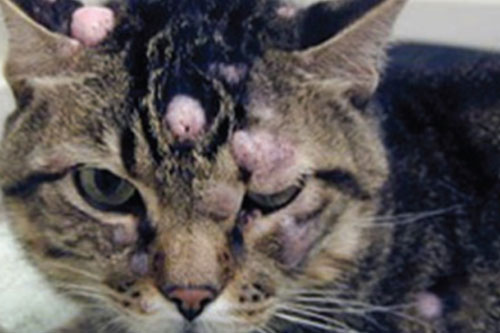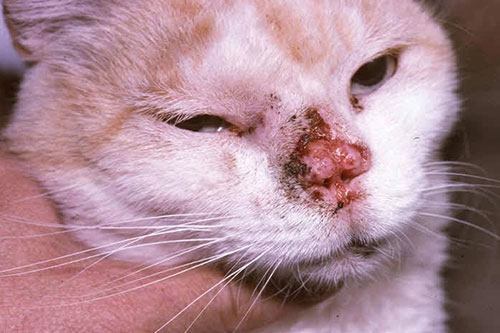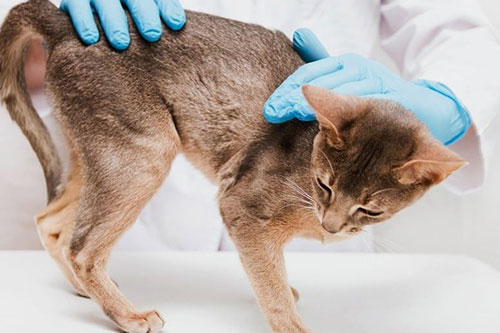Cat Chemotherapy Drugs: The Complete FAQ Guide In 2025
Is your beloved cat is facing the fight against the cancer? Are you manufacturing the cat chemotherapy drugs? This complete cat chemotherapy guide is your companion that will provide you every information regarding the cat chemotherapy drugs.
Whether you are unfamiliar with the drug types, their names, benefits or side effect of usage of the cat chemotherapy drugs, then you are in right place. This guide is worth reading for the cat owner or the manufacturer of cat chemotherapy drugs because it will take you through the complex world of treatment with clarity and care and will also guide you to use the right machines for the manufacturing of these drugs.
Let’s step forward towards the queries because your cat deserves the love and care. Let’s start!
1.What are cat chemotherapy drugs?
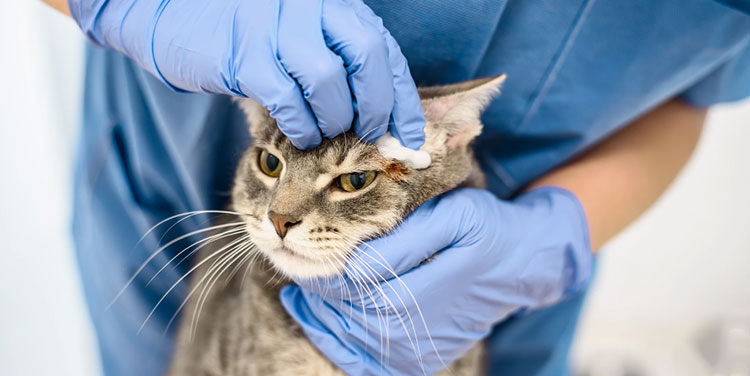
Cat chemotherapy drugs
Cat chemotherapy drugs are the medications that is used to treat cancer in cats. These drugs act on the cancerous cells that rapidly divides but due to this medication, the division of the cells are ceased. During its dosage, it can also affect the healthy cells in the body of cats. For the maximum good results production and increased effectiveness of these drugs, the veterinaries should carefully select the dosage, type and frequency of these drugs.
2.How do cat chemotherapy drugs work in treating the feline cancer?
The feline cancer can be treated by using chemotherapy drugs. The cat chemotherapy drugs can control the cancer and performs the following task in the body of cat. The detailed explanation is given below:
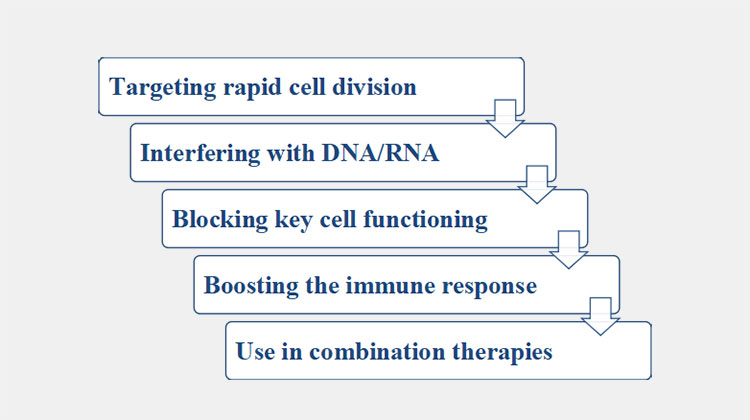
Targeting rapid cell division:
Do you know the rapidly divide cells are cancerous cells. The chemotherapy drugs are designed in such a manner that it act upon the rapidly dividing cells. But what happens when these drugs act upon the cancerous cells? Well, these drugs integrate with the cancerous cells and try to stop the process of division.
Interfering with DNA/RNA:
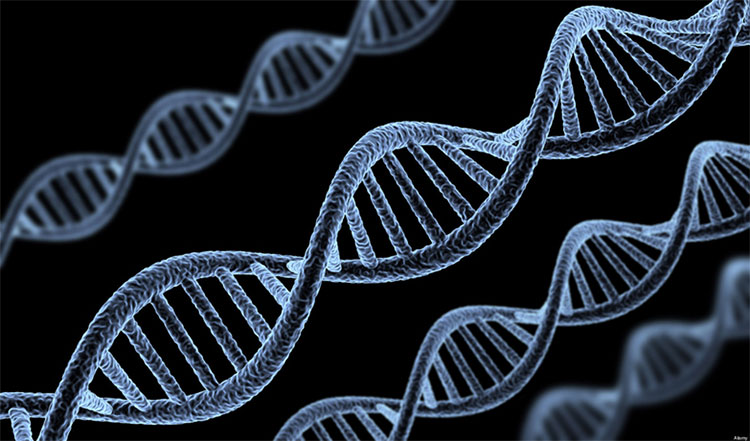
DNA/RNA structure
You must be wondering what happens when the chemo drugs act upon the cell. What makes them from dividing? Let me tell you, the chemotherapy drugs act upon the DNA of the cell, where the essential information regarding the reproduction of cells occur. These drugs damage the DNA and hence, prevent them from reproducing.
Interfering with RNA
But what is the function of RNA? The RNA has specialized system that synthesized the proteins which is essential for the cell survival. When these dugs interrupt the function of RNA, then the cell survival become difficult and growth decreased.
Blocking key cell functioning:
The cell division works in chain. The microtubules are used during the cell division. Some of the chemotherapy drugs have the capacity to integrate and block the cell division. Some of the drugs like methotrexate interfere with the cancer cells and stops their replication.
Boosting the immune response:
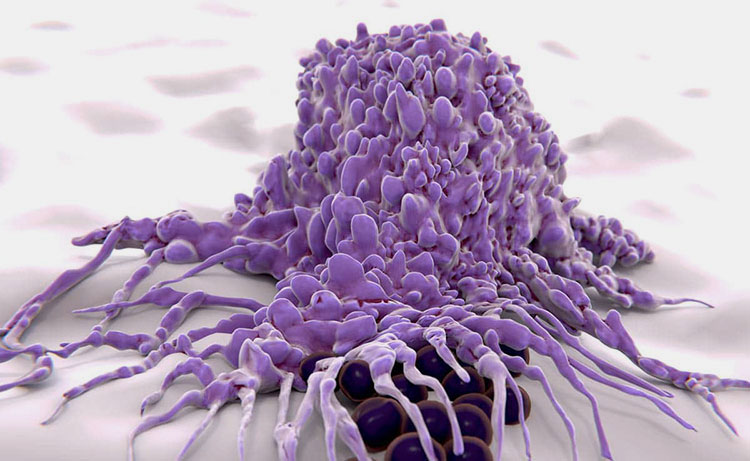
Cells of cat immune system-picture courtesy: cat-world.com
The chemotherapy drugs have the capacity to reduce the cancerous tumors in the cat. The cat immune system recognize it and immune cells are activated which helps in destroying the rapidly dividing cells in the body of the cat. In this way, the immune response is boost up and fight against the unwanted cells in the body.
Use in combination therapies:
Have you ever heard about the combined chemotherapy drugs? Well, in many feline cancer cells, you can use the combination of chemotherapy drugs. But what will happen when the combined drugs are used for the treatment? Well, you can get benefit because each drug will target different cells in a different unique way. By this, the chances of killing the rapidly dividing cells will increase and hence, the chance of curing of cancer is increases.
3.Are cat chemotherapy drugs safe for treatment of different types of cancer in pets?
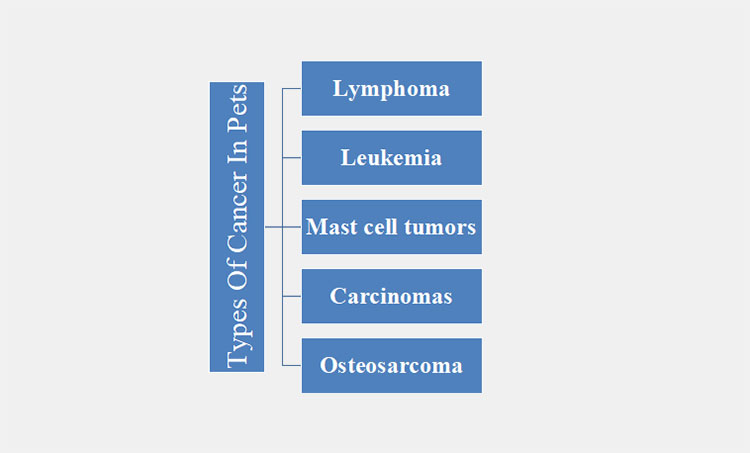
If the cat chemotherapy drugs is used in appropriate way and under veterinary supervision then yes, it is safe for treatment of various cancer types in pets. But there safety depends on type of cancer, the pet age, and health status of the pet.
When chemotherapy is considered safe for treating pet cancers:
| Cancer type | Commonly used chemotherapy drugs | Response to treatment |
| Lymphoma
Lymphoma in cat |
Mostly cyclophosphamide, vincristine and doxorubicin are used for the treatment of lymphoma. This kind of cancer is most common feline cancer. | The chemotherapy response is higher which can be cure in 6 to 12 months. If your cat is older and having intestinal lymphoma, then they often respond well to chlorambucil and prednisolone. |
| Leukemia
(less common in cats than lymphoma)
Leukemia in cat |
Most commonly drugs used for leukemia are Cytarabine and
Prednisolone. |
The chemotherapy response is depends upon the cancer types, acute or chronic. Acute leukemia’s have poor response while chronic leukemia’s may response better and can be managed for several months. |
| Mast cell tumors
(common in skin, spleen and GI Tract)
Mast cell tumors in cat
|
The commonly used chemotherapy drugs for treatment of mast cell tumors are Lomustine and
vinblastine. |
If the cat is suffering from cutaneous mast cell tumor, then you should remove it through surgery but if the tumor is metasized, then chemo is recommended. Gastro intestinal mast cell tumor can be more aggressive and less responsive. |
| Carcinomas
(nasal, mammary and lungs)
Carcinoma in cat-Picture courtesy :Veterinary partner |
The chemotherapy drugs for treating carcinomas are Carboplatin, Cisplatin and Doxorubicin. | The response is measured in months. The chemotherapy is often used after the surgery or radiation. The response is variable and depends upon the site of cancer. |
| Osteosarcoma
(Bone tumor)
Osteosarcoma in cat-Picture courtesy: catster |
The chemotherapy drugs used for treating the osteosarcoma are carboplatin, Cisplatin and radiation/surgery. | If the surgery occur and then chemotherapy drugs exposed the body then it reduce the risk of spreading of the cancer. This cancer is rare in cats. Without chemotherapy, the median survival is longer in cats that is up to 1 year than in dogs. As this cancer also occur in dogs. |
4.Do you know the types of cat chemotherapy drugs?
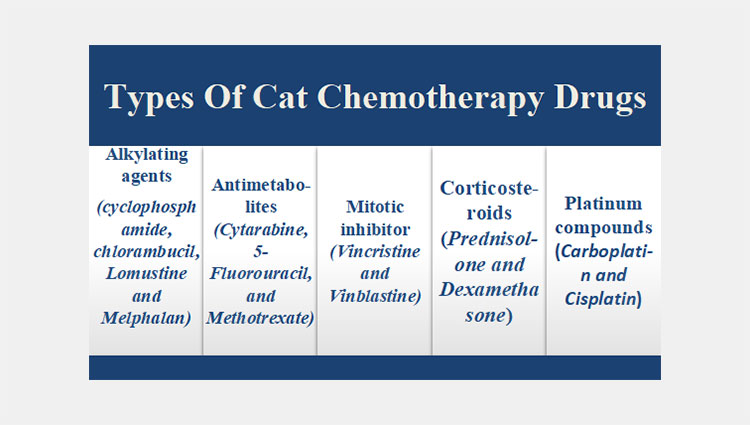
There are different types of cat chemotherapy drugs based on how they act on cancer cells. The site of action and their treatment in combination with other drugs increases the effectiveness and reduce the chances of drug resistance.
Alkylating Agents(Chlorambucil, Cyclophosphamide, Lomustine And Melphalan):
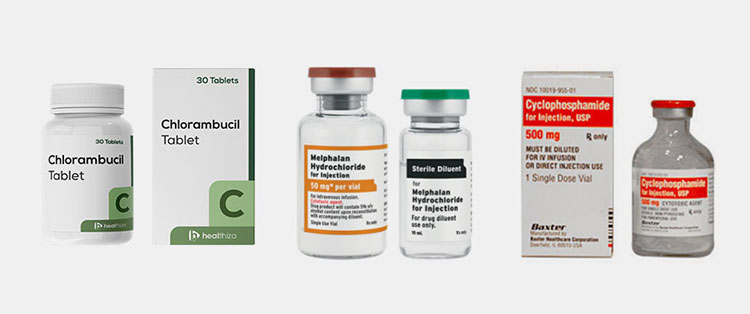
Alkylating agent-Picture courtesy: petcancersociety.com
This type of chemotherapy drugs add alkyl group into the DNA and damage it. Due to this, the replication of DNA stops. The most common alkylating chemotherapy drugs are chlorambucil, cyclophosphamide, Lomustine and Melphalan.
Chemotherapy drugs usage:
Do you know where these drugs are used? You can use cyclophosphamide and Melphalan to treat the lymphoma. You can use chlorambucil for low-grade lymphomas and other bowl disease. If your cat is suffering from mast cell tumors then you can use Lomustine drug for treatment.
Antimetabolites (Cytarabine and Methotrexate):
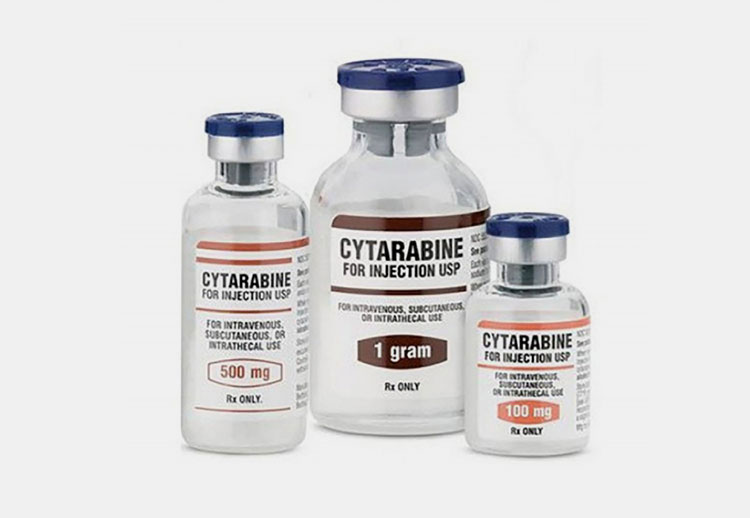
Antimetabolites-Picture courtesy: justdial
Do you know the components are also needed for the DNA synthesis? Well, there are natural substances that helps in DNA synthesis. But antimetabolites cease the production of these natural substances and hence, stops the division of the cancer cells. Cytarabine and Methotrexate are the common antimetabolite drugs.
Chemotherapy drugs usage:
Among them, 5- Fluorouracil is rarely used because it is toxic to cats. Cytarabine is mostly used for treatment of leukemia and central nervous system lymphoma. You can use methotrexate in combination to treat lymphoma.
Mitotic inhibitor(Vincristine and Vinblastine):
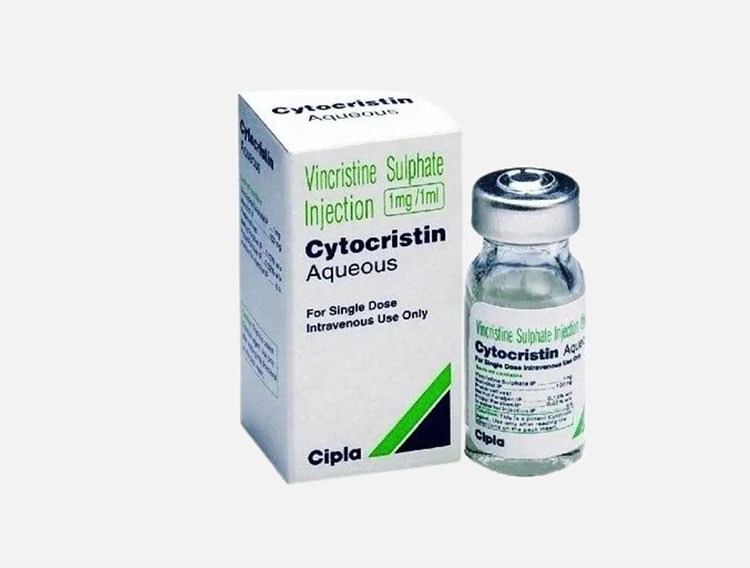
Mitotic inhibitor-Picture courtesy: petcancersociety.com
The microtubules are the cell organelle that helps in the division of cell. The mitotic inhibitors are the types of chemotherapy drugs that interfere with microtubules and block the cell division. The most common mitotic inhibitors are vincristine and vinblastine.
Chemotherapy drugs usage:
Do you know where and what kind of cancers are treated by using these drugs? If your cat is suffering from lymphoma and certain leukemia’s then, you can use vincristine. Is your cat is suffering from mast cell tumors and some carcinomas? You can use vinblastine for treating it.
Corticosteroids (Prednisolone and Dexamethasone) :
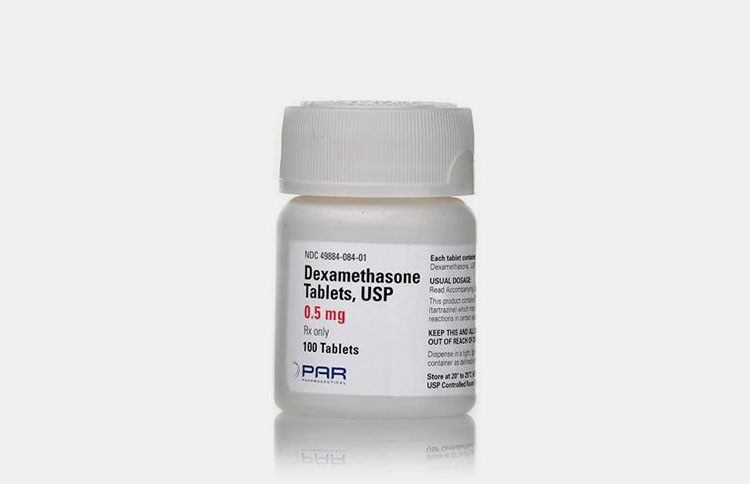
Corticosteroids-Picture courtesy: petcarerx.com
You may noticed a lump and its size is rapidly growing in your cat body. Do you know what that is? The possibility of that lump is lymphocyte or cancerous cells. The corticosteroids like prednisolone and dexamethasone are designed to kill those lymphocytes and reduce the inflammation
Chemotherapy drugs usage:
As you already know some of the drugs are used in combination for action on different cells. So, prednisolone can be used alone or in combination for lymphoma and mast cell tumors.
If your cat is suffering from brain tumors then you can use dexamethasone. You can also use it to control the side effects.
Platinum compounds (Carboplatin and Cisplatin):
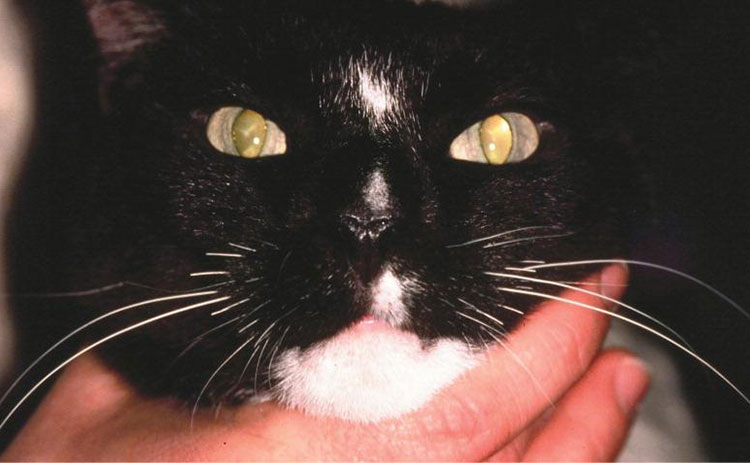
Platinum compounds
The platinum compounds in chemotherapy drugs are cross linked with DNA and prevent the cell division. The most common drugs are carboplatin and Cisplatin.
Chemotherapy drugs usage:
If your cat is suffering from osteosarcoma, nasal tumors or carcinomas then you can use carboplatin drugs. As the Cisplatin is chemotherapy drug but it is not recommended for cats because it can cause fatal lung toxicity.
5.In what ways you can administered cat chemotherapy drugs in to the body of cats?
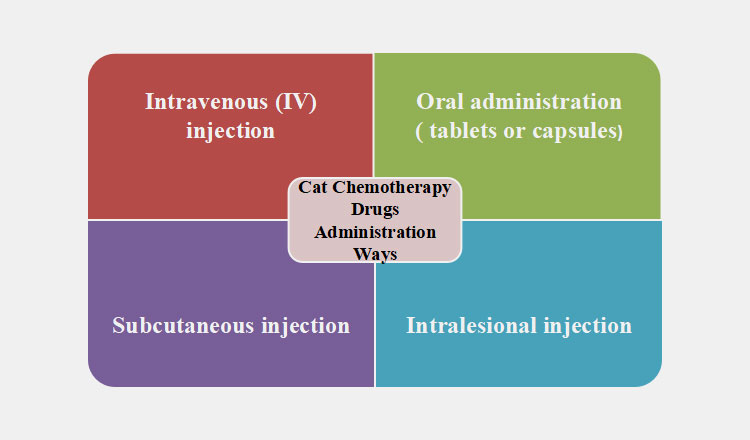
Have you ever wondered in what ways you can administered chemotherapy drugs into your cats? Well, there are many ways depending upon the type of cancer being treated, the health condition of the cat and the type of drugs. These are as follows:
Intravenous (IV) injection:
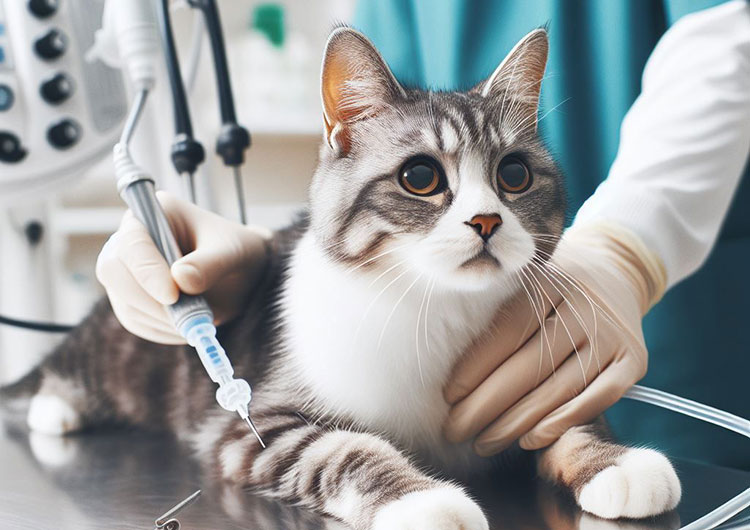
Intravenous injection
In this treatment, the drug is directly injected into your vein, the most suitable site for injection is leg. The most common drugs are vincristine, vinblastine and doxorubicin.
Pros and cons:
You can get a lot of benefits by using this injection as it is fast acting and can circulate throughout the body. This injection is directly absorb into the blood streams and hence, curing of cancer chances increases. You must also be make sure to inject this drug by the trained personnel to prevent the damage of the surrounding tissues.
Oral administration ( tablets or capsules):
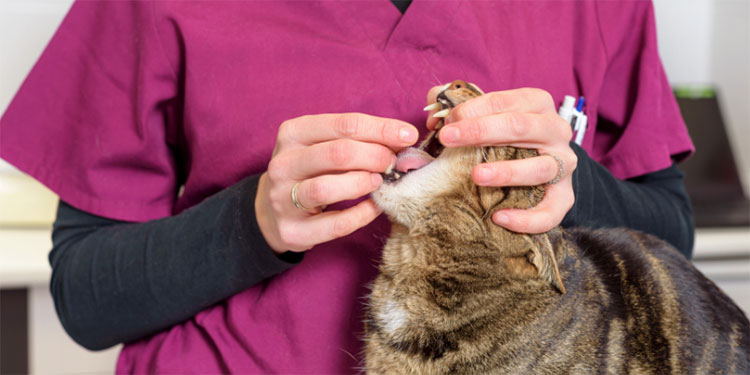
Oral administration
If you are pet owner then this is the suitable method for administration of chemotherapy drugs. You can give the pills or capsules into the mouth at home without going to the experts. The most common drugs are chlorambucil, cyclophosphamide and prednisolone.
Pros and cons:
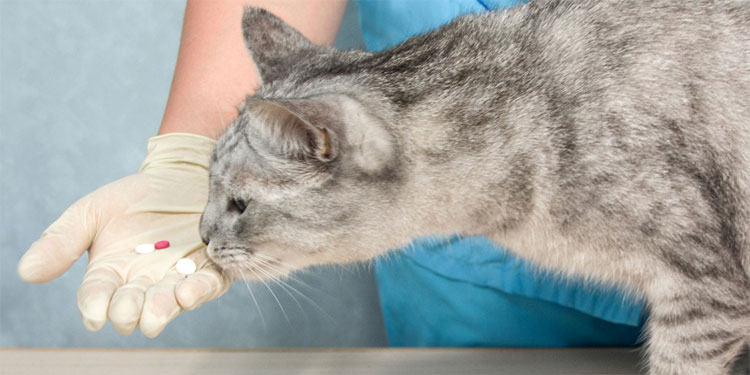
Tablets and capsules for cats-Picture courtesy: aercmn.com
This kind of administration is convenient for treatment at home and less stressful for the cats. But there are some precautions that must be followed while administration. Always wear gloves because the drugs are toxic and careful handle the procedure as some cats resist taking the pills.
Subcutaneous injection:
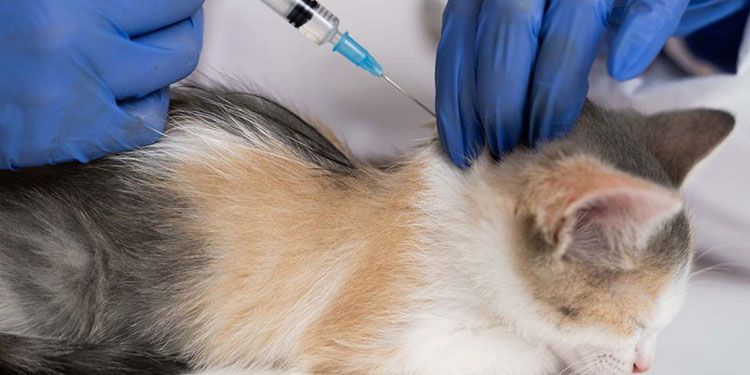
Subcutaneous injection
The drugs are injected under the skin between tissue and skin. The most common drugs that can be administered by this way are Cytarabine and other supportive medications.
Pros and cons:
The pet owners can be taught for home administration and this injection procedure is easier than intravenous method. The drugs given by this method has slower absorption and even some drugs is not effective.
Intralesional injection:
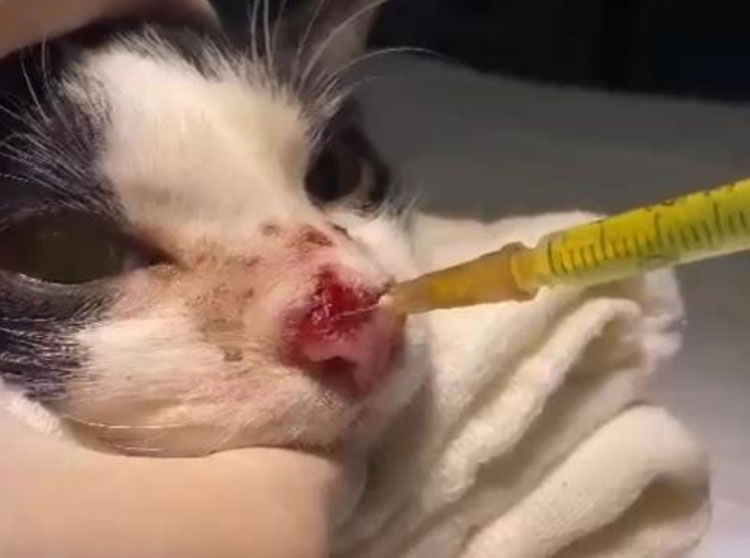
Intralesional injection
The Intralesional injection is directly injected into the tumor. This injection is often injected into certain tumor such as soft tissue cancers.
Pros and cons:
It is directly injected into the site where it is needed and can reduce the side effects by affecting the side tissues as well. This injection is suitable for only localized tumors.
6.What are the common side effects associated with cat chemotherapy drugs?
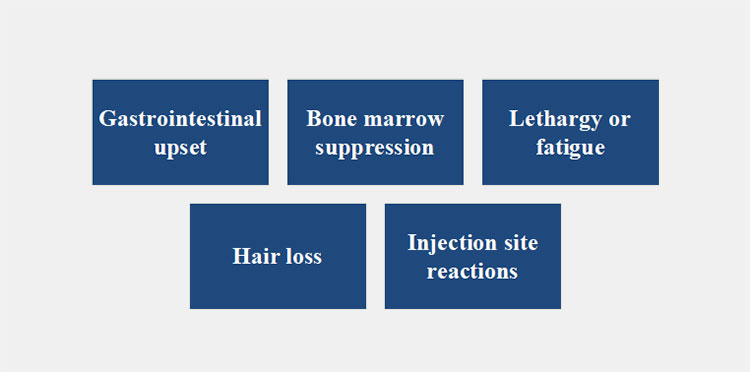
Cat chemotherapy drugs are well tolerated but there are some common side effects that are associated with cat chemotherapy drugs in cat. They are as follows:
Gastrointestinal upset:
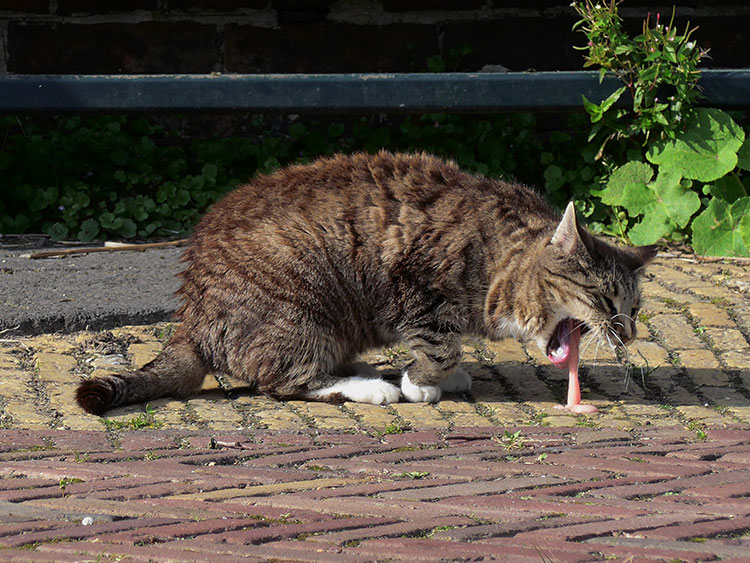
Gastrointestinal upset in cat-Picture courtesy: Your vet online
As the chemotherapy drugs can act on the rapidly dividing cells or you can call them cancerous cells. If you are administrating the pills into the body of cat then, the drugs can also impact the tissues in the stomach and intestine. Due to this reason, they can upset the digestive system. The most common symptoms can be noticed in cats are nausea, diarrhea, vomiting and loss of appetite.
Bone marrow suppression:
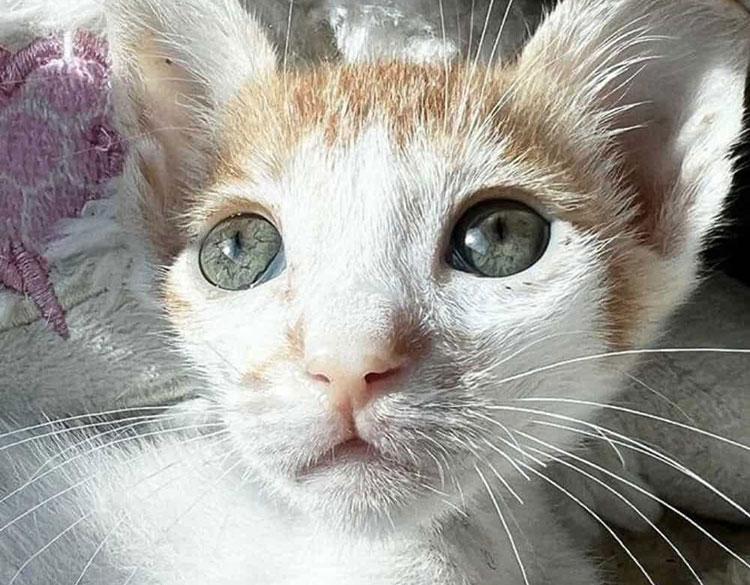
Bone marrow suppression in cat-Picture courtesy: reddit
Do you know the function of the bone marrow? It is responsible for producing blood cells. When you inject the chemotherapy drugs into the body of cat, it can act upon bone marrow and hence, lower the white blood cells production. Due to lower count of these cells, the infection risk is increases.
As chemotherapy drugs also effect the platelets, so bleeding or bruising occur. The low quantity of red blood cells production, anemia can also be noticed.
Lethargy or fatigue:
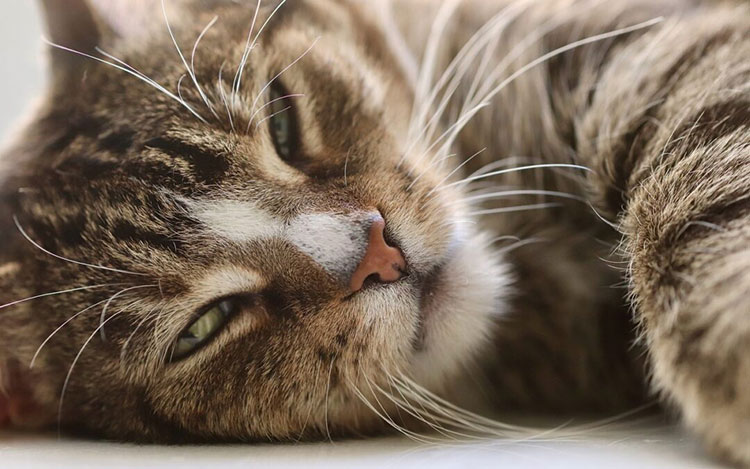
Cat lethargy-Picture courtesy: Properties animal clinic
After chemotherapy treatment, you will observe that your cat will sleep more than usual. The cats may also show no interest in playing and will be in depression. These symptoms typically lasts for about 24 to 48 hours and after that this issue resolve on its own.
Hair loss:
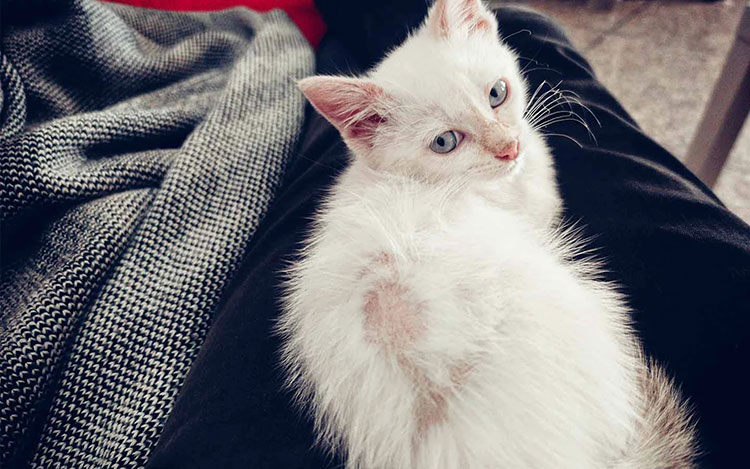
Hair loss in cat-Picture courtesy: dyeranimalclinic.com
You may noticed that your cat hair growth is slow. This means that cat hair growth cycle is slower and chemotherapy drugs rarely causes the hair loss. The hair loss may cause mild thinning in some areas.
Injection site reactions:
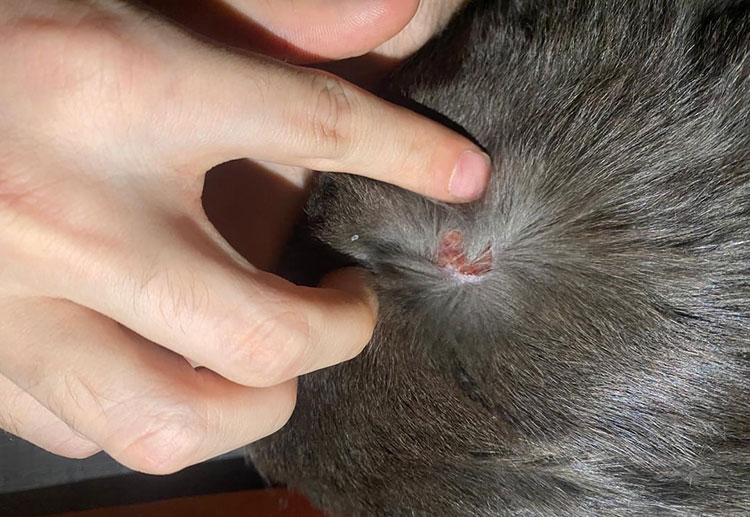
Injection site infection in cat-Picture courtesy: reddit
If you inject the drugs like doxorubicin, vincristine and vinblastine into the body of the cat then, you may noticed the swellings, redness and pain in that area. So, slow infusion of drugs are suggested.
7.What machines are involved in the manufacturing of cat chemotherapy drugs?
Chemotherapy drugs used in the treatment of cat cancer involves tablets, capsules and injections. Various drugs are in different forms so, for the manufacturing of these drugs different machines are involved. Here is how these machines function and perform roles in the manufacturing of these drugs.
For Tablets (e.g., chlorambucil and cyclophosphamide)
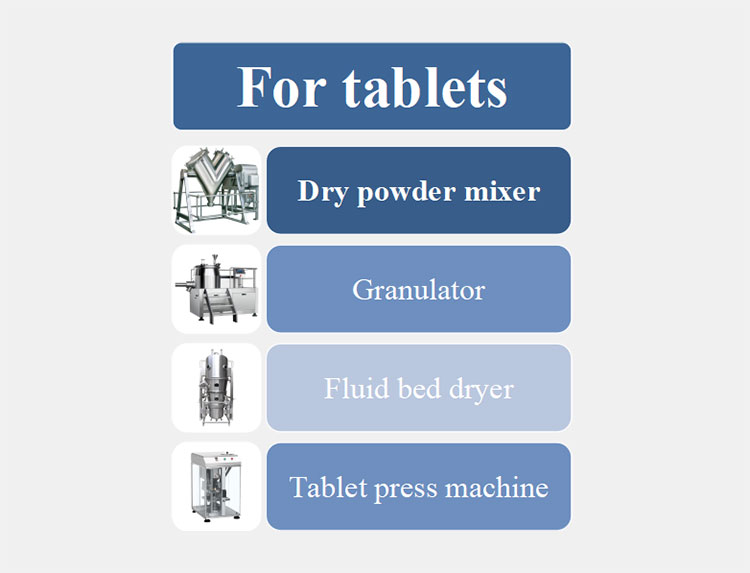
Formulation and blending
Dry powder mixer (Ribbon blender/ V-Blender):
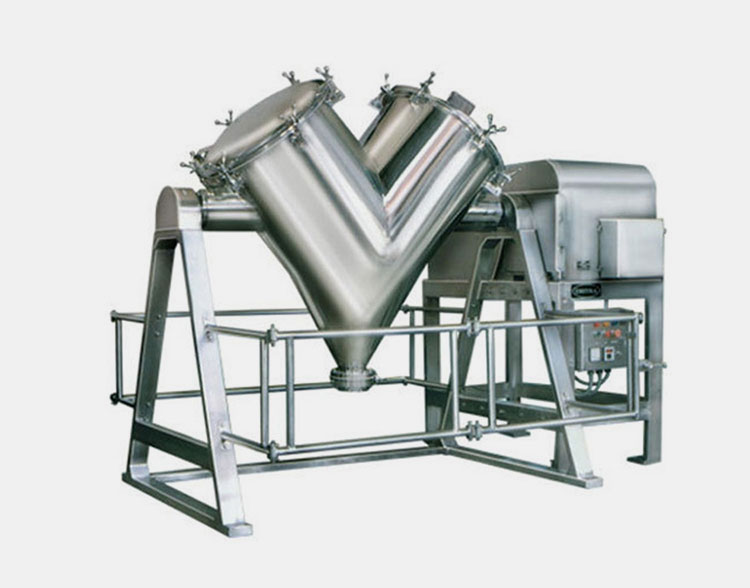
AIPAK V-mixer
The all the active pharmaceutical ingredients (API) are mixed with excipients or the inner substance like microcrystalline cellulose. This is the important tool in cat chemotherapy drugs formation because even a small dose error can be dangerous. This machine mixes all the ingredients very well.
You can use ribbon blender if you want large batch production
If the ingredients you are handling for the tablets formation, which are sensitive and also you wants a small batch production, then you can use V-blender for mixing powder substances.
Granulator:
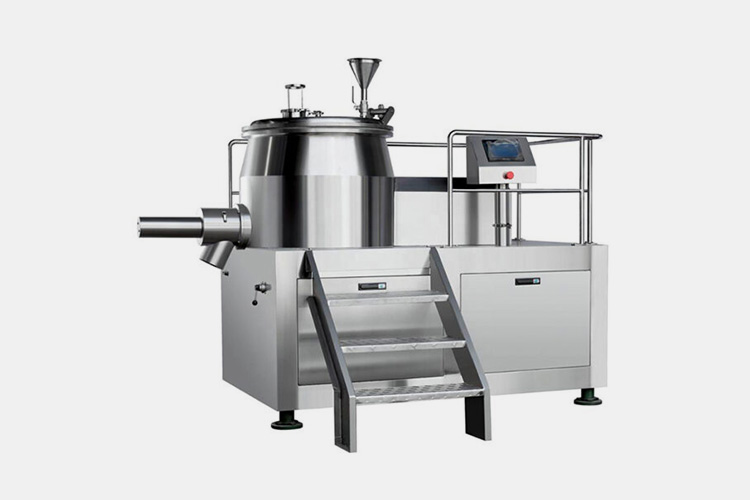
AIPAK Granulator
If you want to prevent dose variability then you should use granulator for better flowability of the blended powder. If you want to add binder solution for better flowability of the powders then you should use wet granulator but some powders ingredients like in the formation of chlorambucil, the ingredients are sensitive to moisture so, you should use dry granulator.
Fluid bed dryer:
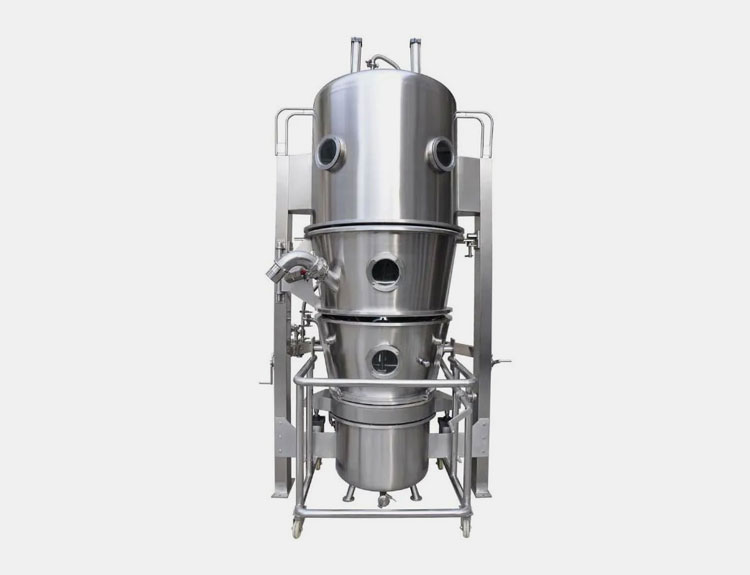
AIPAK fluid bed dryer
This machine should be operate in closed room in order to avoid cross contamination and reduce the risk of exposure. The purpose of fluid bed dryer is to remove the extra moisture content from the granules to ensure the perfect compression of the particles. This can also prevent the degradation of products in chemotherapy drugs.
Tablet compression machine (single or rotary press):
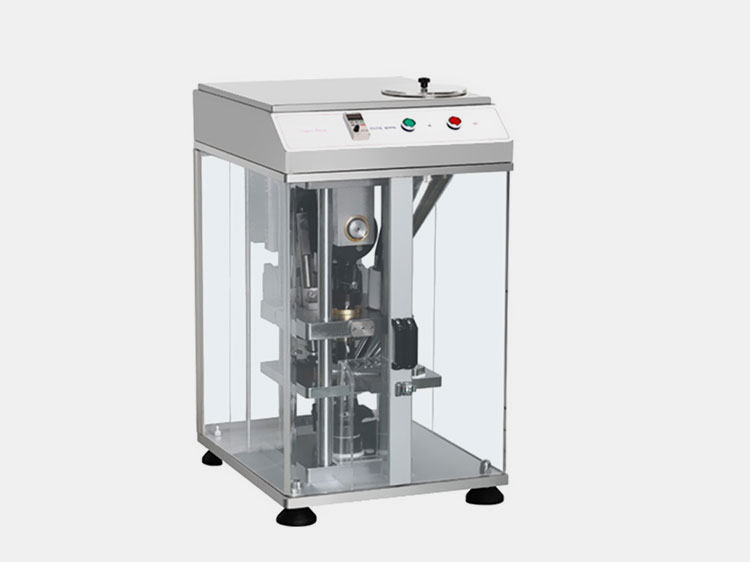
AIPAK single punch tablet press machine
In this machine, the granules are compressed into tablet form. Every tablet ensures the accurate dosing and you can achieve various sized tablets. Single-punch presses is used for R&D and small batch production while the rotary presses is used for large-production.
For capsule formulation (hard gelatin capsules)
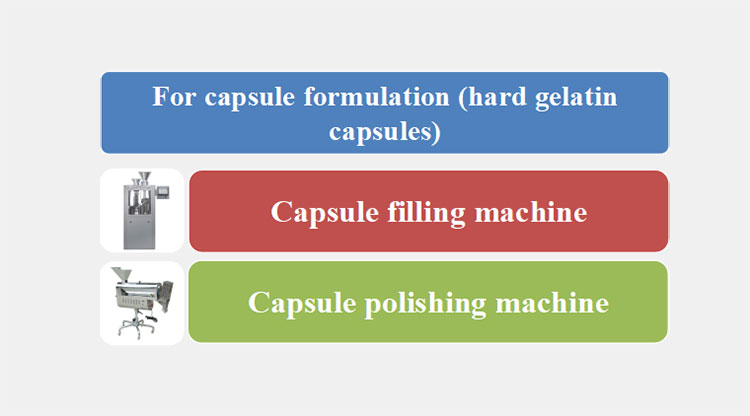
Capsule filling machine:
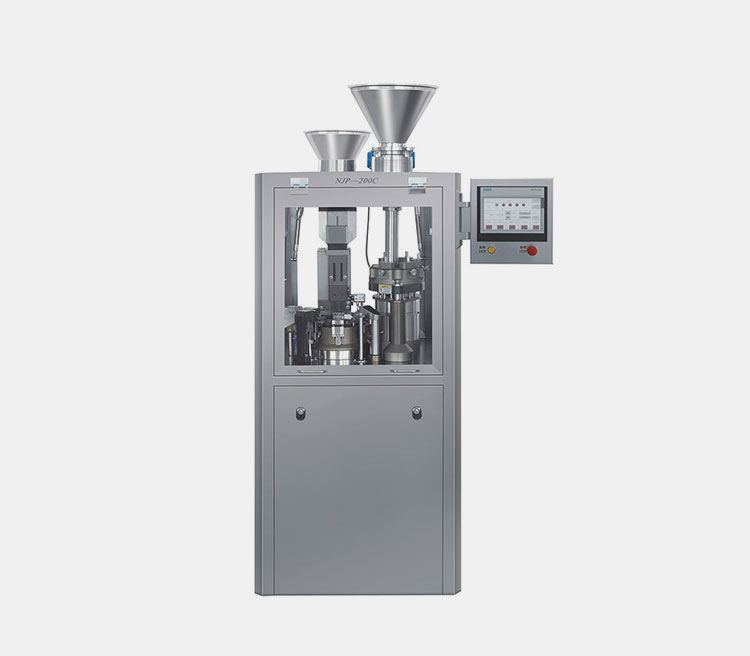
AIPAK automatic capsule filling machine
The fully automatic capsule filling machine is used for large veterinary batches and semi-automatic capsule filling machine is used for small veterinary batches. This machine is designed to fill the powder or granules into the hard gelatin capsules. It ensures the correct dosing of the granules and powders into the capsules which is very essential for cat’s treatment.
Capsule polishing machine:

AIPAK capsule polishing machine
The filled capsules are then processed in capsule polishing machine. The purpose of this machine is to remove the dust particles and polish the capsules. This is important in cat chemotherapy drugs formation because the cytotoxic products are removed after filling in the capsules. By using this machine, you may obtained the clean and shined capsules.
For oral suspensions (Liquid form)
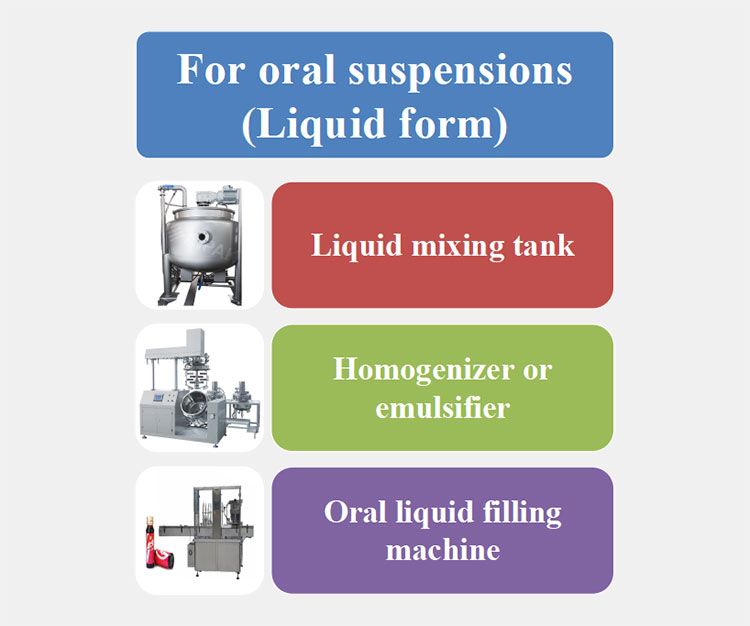
Liquid mixing tank (stainless steel with agitator):

Liquid mixing tank
The liquid mixing tank is used for dissolving and mixing the active pharmaceutical ingredients in liquid medium. This ensures the cat receive equal dose in every injection or in oral suspensions. You can easily clean this machine and is also non-reactive tool.
Homogenizer or emulsifier:
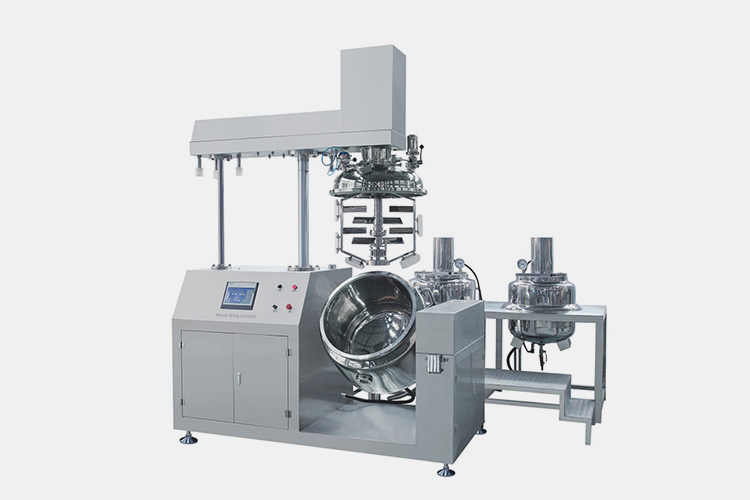
AIPAK homogenizer Vacuum Emulsifying Mixer
The homogenizer or emulsifier is used for uniform particle distribution in the liquid suspension. This is very important if your cat is treated with chemotherapy suspension liquid because every ml consistent dosage should be ensured. By using this, every ml has fine, stable suspended particles and prevent uneven dosing.
Filling and packaging:
Oral liquid filling machine:
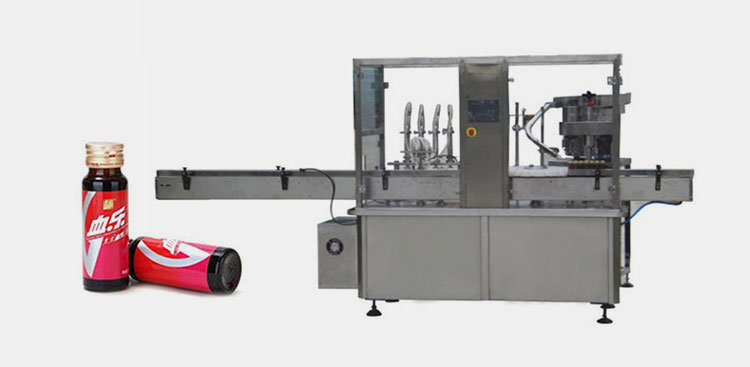
AIPAK liquid filling machine
The oral suspensions are filled in amber glass or PET bottles to protect them from bottle by using oral liquid filling machine. The veterinary chemotherapy doses are filled into customized bottles.
Labeling machine:
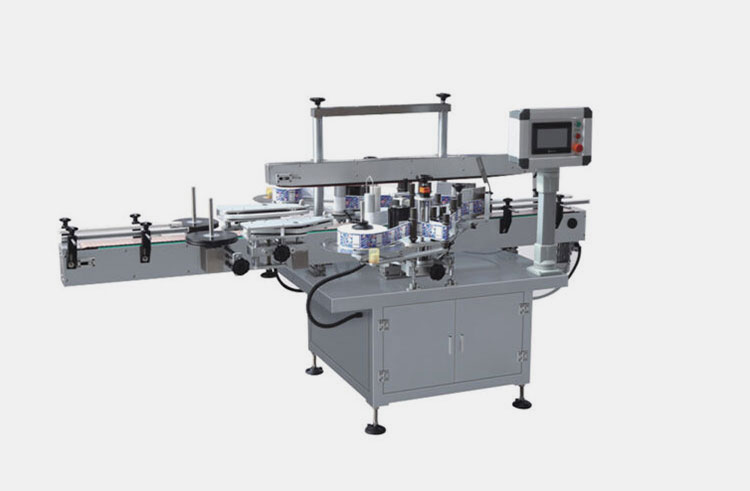
AIPAK labeling machine
Then, the bottles and vials are labeled with a drug name, precautions, QR code and batch numbers and direction of use. The traceability is important for the chemotherapy drugs tractability.
Final packaging:
Blister packaging machine:
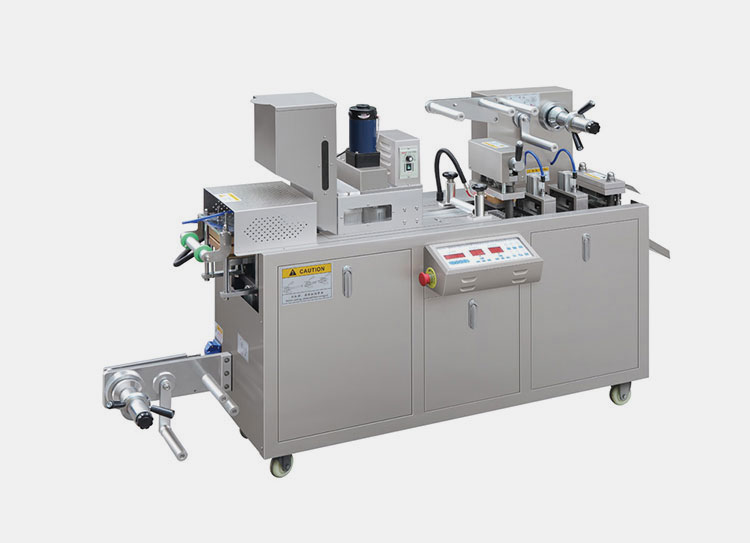
AIPAK Automatic Rotary Blister Packaging Machine
The chemotherapeutic tablets and capsules are then packed in blisters by using blister packaging machine. This machine automatically form the pockets, placed the tablets and capsules and then sealed them with aluminum foil. This prevents the cytotoxic products exposure with the environment and with the human.
Cartoning machine:
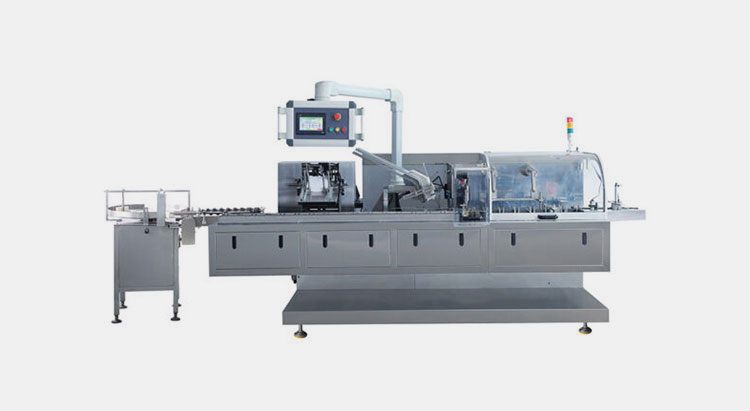
AIPAK cartoning machine
The cartoning machine is used for the packaging of chemotherapeutic drugs blisters and bottles into the cartons. The shrink wrapping and case packing machine is used for the secondary packaging of the products and ensures their safety.
8.What symptoms indicate that the cat chemotherapy drugs might need adjustments or discontinuation?
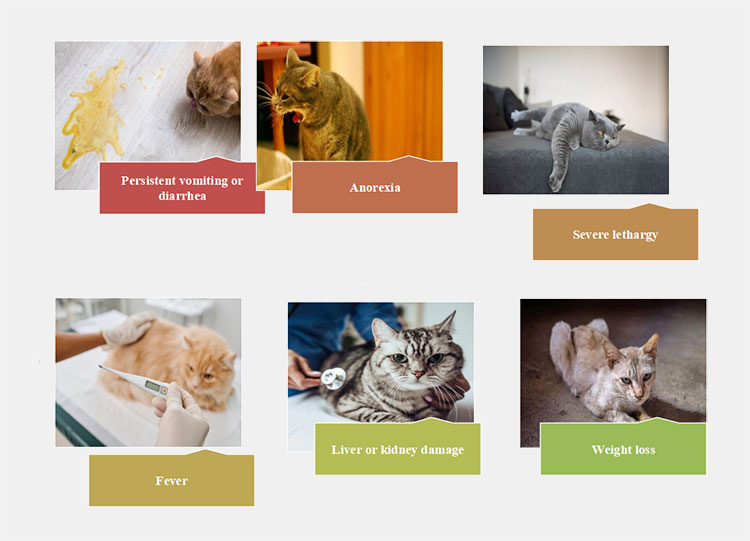
| Symptoms | When it’s concerning | Why it matters | What should be done |
| Persistent vomiting or diarrhea | If you cat is suffering from persistent vomiting and is last for 1-2 days then it leads to dehydration in the body. | The reason behind the vomiting or diarrhea is gastrointestinal injection or your cat may not tolerate the drugs. | You should reduce the dose or switch the drugs. You can also provide your cat with anti-nausea medications. |
| Anorexia | If your cat is suffering from nausea then cat must refuse the food whatever you give. If it is more than 2 days in a row then you should concern about it. | It matters because this may leads to fatty liver diseases and your cat is having a chances of hepatic lipidosis. | You should temporary discontinue the chemotherapy dosage and should require supportive care. |
| Severe lethargy | If you cat is over sleepy and does not respond to the stimuli then you should attentive about it. | This is the side effects of chemotherapy drugs or indicate the weakening of the cat immune system. | You should perform the blood tests and paused the treatment. |
| Fever | The cat may suffer from high fever which indicates the infection or sometimes the cat is coughing and having painful urination. | The high temperature or fever is caused by low white blood cells count in your cat body. | You should immediately stop the chemo procedure and start the antibiotics. |
| Weight loss | If you noticed that your cat has lost more than 10% body weight in few weeks then you must alert about it. | This may indicate that your cat cancer is progressing or may have possibility that your cat body is not tolerating the chemotherapy drugs. | You should add supportive care and add appetite boosters so your cat eat healthy. |
| Liver or kidney damage | If your cat have yellowish gums or eyes or having vomiting then it should concern. | The cat kidney or liver have infection and having drug toxicity. | If the chemotherapy drugs include Lomustine then you should stop the drugs. |
9.How often are cat chemotherapy drugs administered during a treatment cycle?
Do you want a cyclical schedule of the chemotherapy drugs that balanced between the effectiveness and safety of the cat body? The frequency of the chemotherapy drugs administered into the cat body depends on the type of cancer, type of doses and protocol selected by the veterinarians. Here is a detailed notes!
Weekly or biweekly :
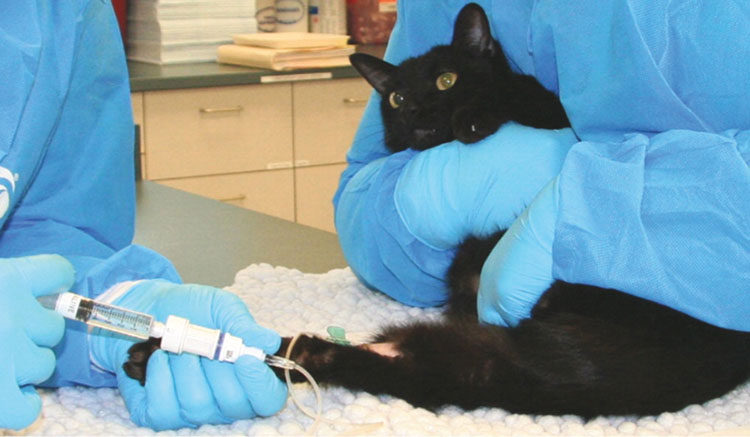
Weekly and biweekly treatment-Picture courtesy: journals.sagepub.com
This is the most common schedule in feline cancers like lymphoma. The most common drugs involved are doxorubicin, prednisolone and vincristine.
You can give these drugs to your cat every 7-10 days or in a week. But how long should it be given? Well, you should give the drugs for few months, after that the interval may extend to every 2-3 weeks.
Every 3 to 4 weeks:
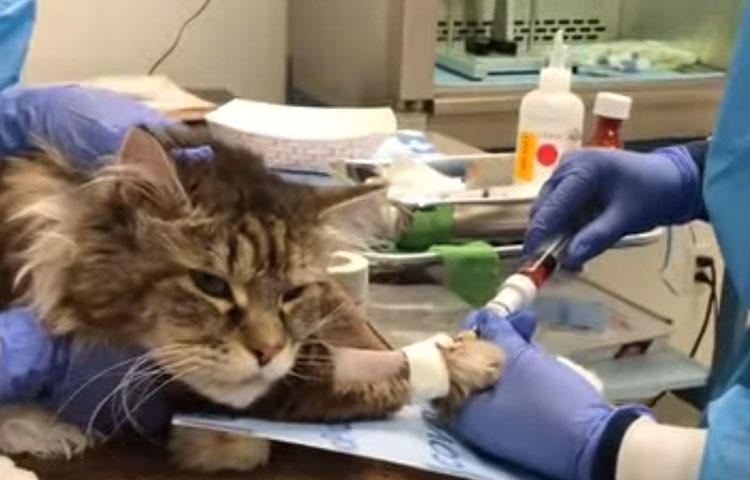
Treatment of cat in every 3 to 4 weeks
If you are giving a drugs like doxorubicin, carboplatin and Lomustine, then these should be given once in every 21 to 28 days. The gap is due to stronger chemotherapy drugs and allow the gastrointestinal tract cells and bone marrow cells to recover.
Oral daily or home schedules:
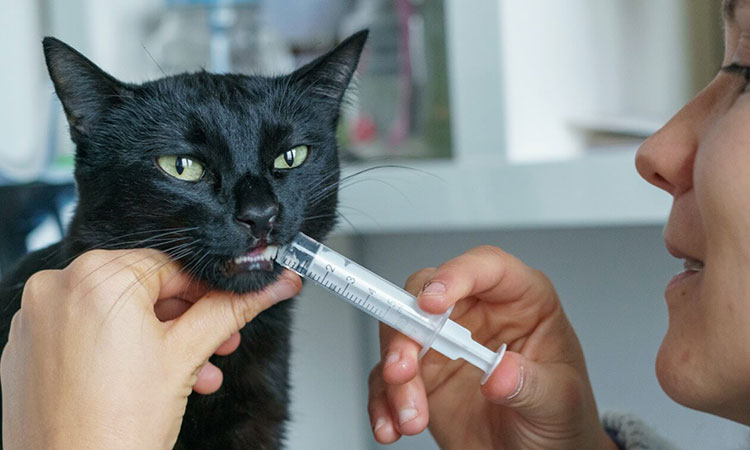
Daily treatment-Picture courtesy: zoetispetcare.com
If your cat has slow growing cancer then chlorambucil, prednisolone, and cyclophosphamide should be given. You can administered it at home and should be administered daily or a few days per week.
10.What precautions should pet owners take while handling cat chemotherapy drugs?
Do you know the chemotherapy drugs are cytotoxic which means they can kill cells? If you are handling chemotherapy drugs at home, then you should handle it carefully because if it contact with the skin, inhaled or accidently ingested then it can be harmful to the pet and human beings. Here are some of the precautions that should be considered while handling chemotherapy drugs.
| Precautions | Images | Why it is important |
| Wash hands thoroughly |  |
You should wash your hands before and after the drugs are handling even if you wore gloves. Also make sure not to eat, drink or other such activities which can affect your body. |
| Wear gloves and avoid direct contact | 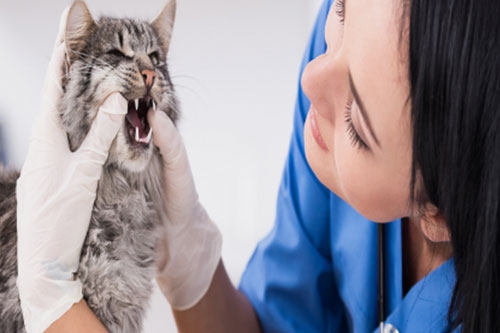
Wear gloves while in contact with cat-Picture courtesy: glovenation.com |
Always make sure to wear gloves and also make sure not to direct contact because the drugs may be absorbed into your body through skin. |
| Handle and store drugs safely | 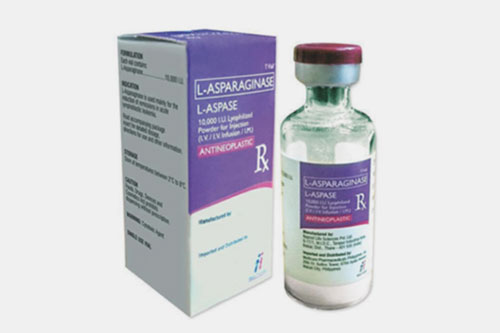 |
Always make sure to store the chemotherapy drugs in the original, labelled containers and keep them in safe place. You should always follow the vet instruction about keeping and storing the drugs. Also, handle the drugs properly like don’t crush, open or break the capsules and tablets. |
| Handle cat waste with caution | 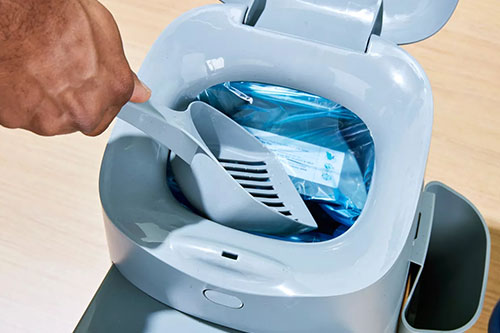
Dispose of cat litter in disposable plastic bag-Picture courtesy: thesprucepets.com |
The chemotherapy drugs and their wastes can be extracted in cat urine, feces and saliva. Always wear gloves while cleaning the litter and place them in disposable plastic bags and dispose them properly. If you cat accidently start vomiting, then clean them with disposable towel. |
| Prevent cross contamination | Always keep the cat food and chemotherapy drugs separate. This will create cross contamination. | |
| Dispose of leftover drugs properly | 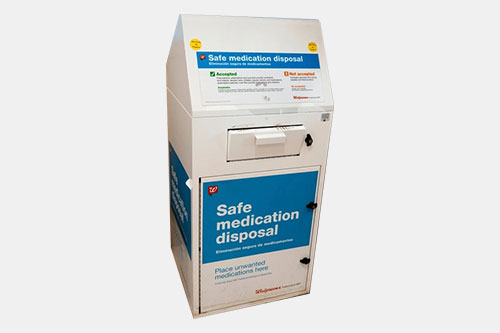 |
You should dispose the unused or expired chemotherapy medication in a proper way. Don’t throw them in a regular trash. Infact you can return them to local pharmacy or veterinarians for safe disposal. |
Conclusion:
After reading this blog, you’ll have an idea about the chemotherapeutic drugs used for cats. The chemotherapy drugs for feline provided by AIPAK ENGINEERING is a harmonious fusion of pharmaceutical precision and advanced machine technology. The micro-dosing is essential for every type of chemotherapeutic drug either the feline cancer is treated by giving oral treatment or by injecting it into their bodies. The machines guarantee you the highest standard of safety, purity and efficiency in each batch because we provide aseptic conditions from the ingredients to the final packaging of cat chemotherapeutic drugs. For more information, contact us!
Don't forget to share this post!
CONTACT US
Tell us your raw material and project budget to get quotations within 24 hours.
WhatsApp Us: +86 181 7101 8586
 Tell us your material or budget, we'll reply you ASAP within 24 hours
Tell us your material or budget, we'll reply you ASAP within 24 hours


